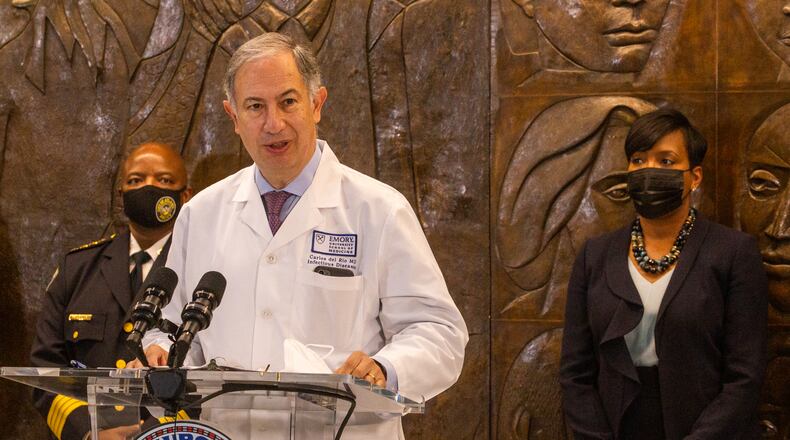Atlanta is using a new coronavirus response plan to quickly communicate the current risk of infection citywide, as opposed to the old method that showed how close the city was to fully reopening.
The “COVID-19 Resilience Plan” replaces Atlanta’s reopening phases plan with a color-coded system. The plan tracks the pandemic’s status in the city — from worst to best — by referring to red, yellow, green and blue zones.
Atlanta is currently in the yellow zone after the mayor’s office said the city is experiencing a “high risk of COVID transmission.”
“The COVID-19 Resilience Plan offers needed flexibility to address [the pandemic] with the unpredictability of the COVID-19 variants, while underscoring the importance of dynamic guidance versus a static approach,” the mayor’s office said in a statement.
Emory University infectious disease expert Dr. Carlos del Rio said Thursday that city officials consulted with him to create the new plan as a way to reduce COVID’s spread.
“The (old) plan was done at a time when we didn’t have vaccines...This new plan is more responsive to the realities of COVID as we understand them today versus the way we understood them a year ago,” he said.
The color codes do not have policies attached to them, such as the old Phase 1 being a total stay-at-home order and Phase 5 being a resumption of large gatherings and events without masks.
Rather, del Rio said, the new plan encourages behavior based on the color. He compared it to weather reports urging people to carry an umbrella when there’s a threat of rain.
Atlanta Mayor Keisha Lance Bottoms will continue to consult with public health experts on policies to stem the spread, according to the mayor’s office statement.
Bottoms issued an executive order July 28 mandating that masks be worn in all public buildings, including inside private businesses.
Atlanta’s new plan maintains several current policies, such as the indoor mask mandate, restrictions of less than 50,000 attendees at events, and the ongoing closure of city facilities until after Labor Day. It also encourages vaccinations, social distancing, frequent hand washing and cleaning of public areas.
The colors of the new plan are based on metrics, including the percentage of the population fully vaccinated, the seven-day averages for new cases, the positive testing rate, and hospitalizations. Vaccinations will be monitored daily while the other metrics are monitored over 10 days.
“The city is open and hopefully we won’t need to close it,” del Rio said. “If you’re not vaccinated, get vaccinated.”
Atlanta’s color-coded zone system
- Red Zone: New cases above 250, hospitalizations above 350, test positivity above 10%
- Yellow Zone: New cases between 75-249, hospitalizations between 201-349, test positivity between 5.1-10%
- Green Zone: New cases between 20-75, hospitalizations between 50-200, test positivity between 1-5%
- Blue Zone: New cases below 20, hospitalizations below 50, test positivity below 1%
About the Author
The Latest
Featured



